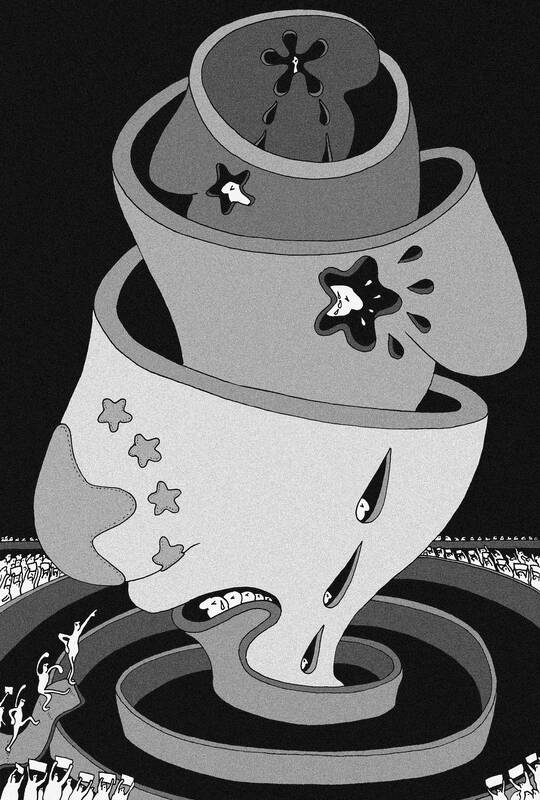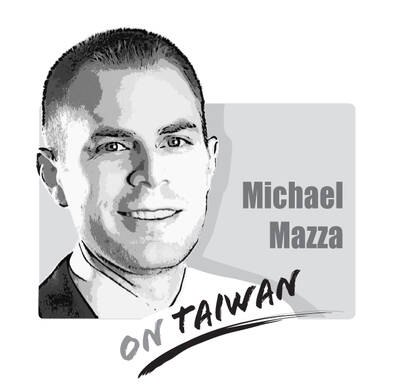Protesters across China have made one thing very clear: After three years of harsh restrictions, many people are tired of their government’s pursuit of an increasingly ineffective “zero COVID” strategy.
China once celebrated its success in containing outbreaks and keeping its economy running, but it has been slow to adapt to a world of more infective variants and mass vaccination. As life begins to feel increasingly normal in Britain and elsewhere, 49 cities — representing one-third of China’s population and two-fifths of its economic output — are in partial or total lockdown.
The protests would put pressure on the regime to change its approach, but that might be easier said than done. China has been highly politically committed to its COVID-19 policy, even as it has become less and less tenable. Moreover, the situation with its health system, population immunity and vaccine stocks is vastly different from the UK’s, partly because of the choices it made earlier in the pandemic. China will have to face some form of living with the virus soon, and millions of lives — not to mention global economic stability — depend on how this happens.

Illustration: Mountain People
China was an early adopter of overwhelming measures to contain COVID-19. This involved recurrent lockdowns affecting millions, but also building isolation centers and hospitals very quickly, mass polymerase chain reaction testing, intensive contact tracing and surveillance, and mandatory masking. Some of the measures were incredibly draconian. Yet, despite the cost to civil liberties, it worked in stopping COVID-19 initially.
However, last year, several safe and effective vaccines were approved, which meant that widespread protection could be delivered to Western populations. Take-up was remarkably high, and country after country, including maximum suppression countries such as New Zealand, Australia and South Korea, pivoted from containment to mass vaccination, access to antiviral therapies and “living with COVID-19.”
Ignoring the trend, China stayed with its strategy of elimination within its borders. The Chinese government did roll out its homegrown vaccine, but took a different approach than the West. Its vaccination priority list focused on healthy young adults, and instead noted the side-effects of the vaccine to elderly groups. It did not promote the vaccine to elderly groups until November last year, but by this time considerable vaccine skepticism had built up. Rising concerns about the low effectiveness of the non-mRNA Chinese vaccines were also a concern: Studies indicated that protection faded fast and was undetectable after six months.
Recent reports suggest that only about 40 percent of over-80s have received a booster shot, and millions still remain unvaccinated. To put this in perspective, the overall booster rate was more than 90 percent in Japan while only 68 percent in China. The Chinese government’s efforts to push vaccination have been met by a population used to “zero COVID” messaging and having a false sense of security that they will not ever be exposed to the virus, so why get vaccinated at all?
Moreover, population exposure has been minimal in China. It has had just under 1.5 million infections in a population of 1.4 billion, and the national death toll is 5,229. Compare this with England, where the Financial Times estimates that more than 90 percent of the population has had COVID-19 at least once. This hybrid “wall of immunity” in Britain has come at a major cost: The UK death rate stands at 2,400 per million, compared with just three deaths in 1 million in China.
All of this means that China’s population has a lower vaccination rate, with vaccines that appear less effective, than in most other countries. Many people do not have any immunity gained from a previous infection either. If China gives up on containment and allows a large wave of infections, it would take a huge loss of life given current vaccination levels: They are just too low in the most at-risk groups. This would overwhelm the already-fragile Chinese healthcare system with too many patients who need care.
Moreover, the 2020 playbook is not working in 2022 in China, with a much more infectious version of the virus — Omicron — and a population fed up and tired of restrictions and constantly changing rules. Millions of businesses have had to shut down and the country has taken a major economic hit: The World Bank forecasts GDP growth in China of just 2.8 percent, behind the rest of the region’s average of 5.3 percent. This would be the first time China’s GDP growth would be lower than its neighbors since 1990. Yet there are few signs the government would change tack for political and health system reasons.
Politically, Chinese President Xi Jinping (習近平) has projected a clear narrative of protecting China’s population through a “zero COVID” policy and sees it as one of his successes. He defended the strategy vigorously at the recent Chinese Communist Party congress, and any sudden policy shift might be seen as an admission of failure. Moreover, while there are increasing protests against restrictions, other parts of the country are calling for authorities to do everything to protect them from the virus. They have heard about the death toll in the Western world and do not want to be exposed to the virus.
The other concern of Chinese scientists and politicians is long COVID, which some feel has been underestimated in Western countries. This concern is understandable. An estimated 2 million people are suffering from long COVID in Britain and it is cited as one of the major reasons for the rising number of “economically inactive” people.
No matter what approach China takes, it needs to improve its vaccines. However, to do this, it would need access to mRNA technology, and this has been stuck at an impasse. Moderna has refused to transfer its technology to Chinese firms for manufacturing, instead eager to sell directly to a large market. China has instead worked to develop a homegrown mRNA vaccine, but this has caused delays in rollout.
The countries that dealt most successfully with the pandemic, such as New Zealand, South Korea, Japan, Denmark and others, did it by successfully moving from containment in 2020 to mass vaccination and treatments last year and this year. This is the only sustainable exit from this pandemic and China is likely to take this route eventually. It will need to get mRNA vaccines to the biggest priority groups quickly, and also bring an exhausted public along through what is likely to be a jarring shift in strategy — from no COVID-19 at all to COVID-19 circulation with vaccine protection.
Let us hope China makes this transition before it is forced, regardless of what the government wants, to live with COVID-19 before it is ready. China buckling under a wave of COVID-19 would affect the entire world, not just disrupting economic stability, but potentially creating new variants that could set progress back everywhere.
Devi Sridhar is chair of global public health at the University of Edinburgh.

Could Asia be on the verge of a new wave of nuclear proliferation? A look back at the early history of the North Atlantic Treaty Organization (NATO), which recently celebrated its 75th anniversary, illuminates some reasons for concern in the Indo-Pacific today. US Secretary of Defense Lloyd Austin recently described NATO as “the most powerful and successful alliance in history,” but the organization’s early years were not without challenges. At its inception, the signing of the North Atlantic Treaty marked a sea change in American strategic thinking. The United States had been intent on withdrawing from Europe in the years following
My wife and I spent the week in the interior of Taiwan where Shuyuan spent her childhood. In that town there is a street that functions as an open farmer’s market. Walk along that street, as Shuyuan did yesterday, and it is next to impossible to come home empty-handed. Some mangoes that looked vaguely like others we had seen around here ended up on our table. Shuyuan told how she had bought them from a little old farmer woman from the countryside who said the mangoes were from a very old tree she had on her property. The big surprise
The issue of China’s overcapacity has drawn greater global attention recently, with US Secretary of the Treasury Janet Yellen urging Beijing to address its excess production in key industries during her visit to China last week. Meanwhile in Brussels, European Commission President Ursula von der Leyen last week said that Europe must have a tough talk with China on its perceived overcapacity and unfair trade practices. The remarks by Yellen and Von der Leyen come as China’s economy is undergoing a painful transition. Beijing is trying to steer the world’s second-largest economy out of a COVID-19 slump, the property crisis and
As former president Ma Ying-jeou (馬英九) wrapped up his visit to the People’s Republic of China, he received his share of attention. Certainly, the trip must be seen within the full context of Ma’s life, that is, his eight-year presidency, the Sunflower movement and his failed Economic Cooperation Framework Agreement, as well as his eight years as Taipei mayor with its posturing, accusations of money laundering, and ups and downs. Through all that, basic questions stand out: “What drives Ma? What is his end game?” Having observed and commented on Ma for decades, it is all ironically reminiscent of former US president Harry